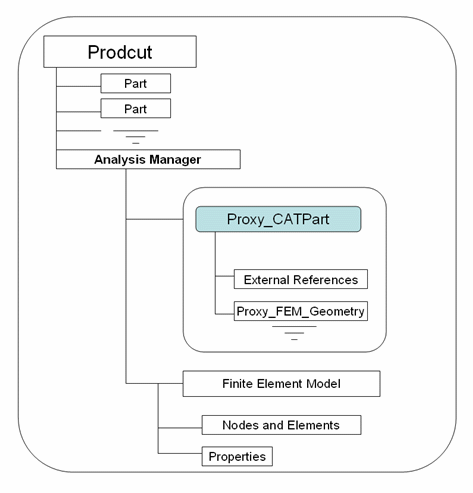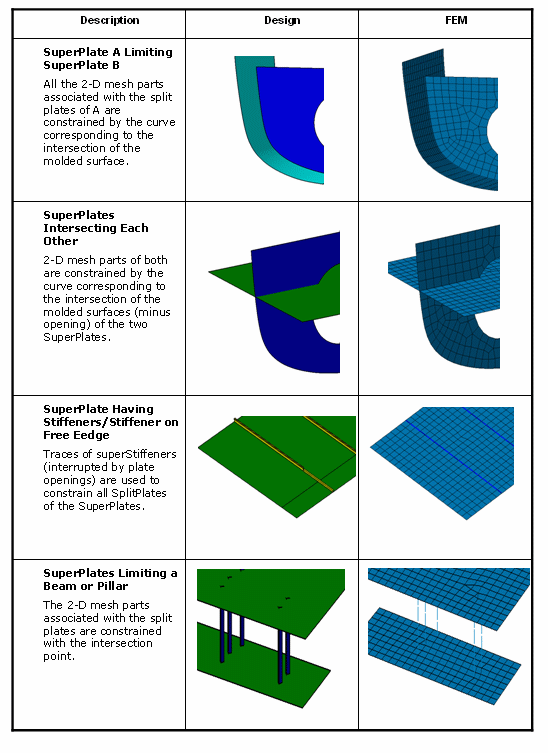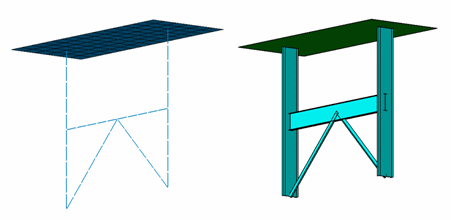
2-D Mesh Part (Plate)
Curve Constraints
- The intersection of the trace of the Split Stiffeners on the intSplit of the superplates.
- The intersection between a given plate with all other plates.
Point Constraints - The intersection between a given plate and traces of the beams.

1-D Mesh Part (Beam or Pillar)

